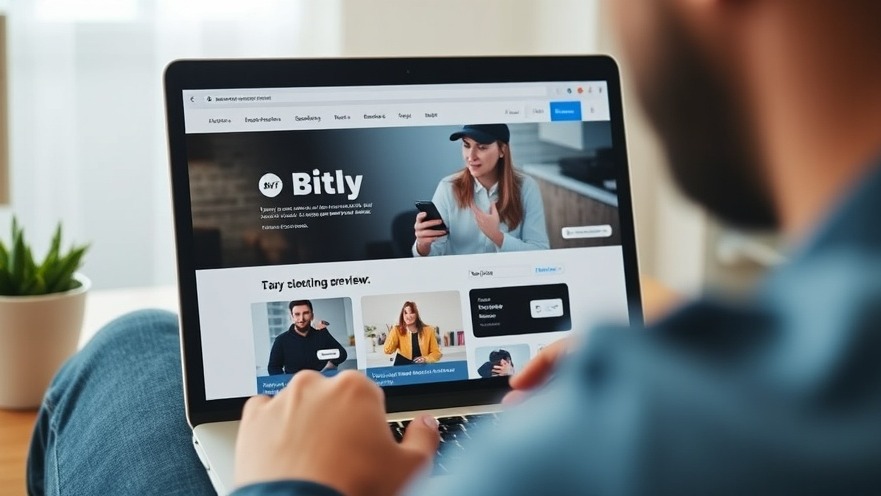
Bitly's New Direction: A User Experience Blow
In a groundbreaking move that users did not anticipate, Bitly, the popular URL shortening tool for marketers and businesses, has announced a change that potentially shadows its long-held reputation for simplicity. Starting next month, anyone clicking on a Bitly link will first encounter a new preview page before proceeding to their intended destination. This surprising upgrade, which will now contain information about the link along with possible ads, appears to be a substantial step back in delivering a seamless user experience.
Where Convenience Lies
Bitly has always been lauded for its efficient service that allows users to share links effortlessly. In the business world, where every second counts for customer engagement, the expectation has historically been straightforward: click a link and arrive at the content directly. This emerges from a necessity in marketing strategies that aim for immediate action—a need that is now jeopardized by the introduction of an extra click. With the overwhelming presence of distractions in today’s digital age, an unwanted interruption feels less like a feature and more like a barrier.
Cognitive Load: The Impact of Additional Steps
Each additional click creates more than just a minor inconvenience; it impacts cognitive load. When users face unanticipated delays, their comfortable user journey becomes cluttered, leading to frustration. For marketers, this could mean a direct decrease in click-through rates as potential customers abandon links in pursuit of simpler alternatives. This is especially concerning for franchisors keen on maintaining brand consistency across various platforms—they rely heavily on user trust to drive engagement through well-functioning tools like Bitly.
The Trust Factor in URL Shortening
Even more troubling is how this change could erode trust among users. URL shorteners have faced scrutiny for concealing link destinations, raising privacy and safety alarms with unchecked visibility. Although Bitly has previously earned a reputation for reliability, the addition of a preview page could ironically increase skepticism, questioning whether users are truly safe when clicking on what has become more ad-centric links. If a link conspicuously showcases advertisements, the perceived credibility of that link diminishes, injecting doubt about its integrity.
Are Ads the New Norm?
Introducing ads into the linking experience could prove detrimental. Users who opt for Bitly links expect a clear, ad-free path to their content. The thought of encountering advertisements while merely trying to access information is likely to dissuade users from continuing with that expectation. For franchisors and businesses valuing brand consistency, this shifts the narrative towards navigational confusion, potentially compromising their marketing messages.
What Lies Ahead for Bitly's Future?
This transitional phase raises fundamental questions about user experience and brand loyalty. Will Bitly reevaluate this change in light of user feedback? Could this new model affect its position against competitors that prioritize directness over added intrusions? The anticipation of future developments in the URL shortening space remains high, but if Bitly continues on this path, it risks losing the very customers—marketers and businesses—who made it a household name.
As we navigate this new landscape, many in the industry will be observing closely how Bitly's decisions affect their operational success. The choice remains whether to adapt brand strategies to align with these new industry standards or pivot towards more efficient tools that prioritize user experience over advertising revenue.
 Add Row
Add Row  Add
Add 




Write A Comment